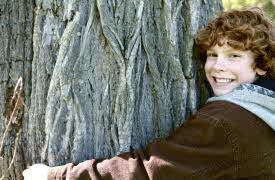Kids Need To Spend More Time OutdoorsDear EarthTalk:
My kids just want to play videos games and watch TV all day. Do you have any tips for getting them outside to appreciate nature more?
Sue Levinson, Bowie, MD Getting kids away from computer and TV screens and outside into the fresh air is an increasing challenge for parents everywhere. Researchers have found that U.S. children today spend about half as much time outdoors as their counterparts did 20 years ago. The Kaiser Family Foundation reports that kids aged eight to 18 spend on average more than seven and a half hours a day—or some 53+ hours per week—engaging with so-called entertainment media. Meanwhile, the Children & Nature Network (C&NN), a non-profit founded by writers and educators concerned about “nature deficit disorder,” finds that, in a typical week, only six percent of American kids aged nine to 13 plays outside on their own.  Children who play outside more are in better shape, more creative, less aggressive and show better concentration than their couch potato counterparts. Children who play outside more are in better shape, more creative, less aggressive and show better concentration than their couch potato counterparts.
Credit: iStockPhoto |
|
According to Richard Louv, a founding board member of C&NN and author of the book, Last Child in the Woods, kids who stay inside too much can suffer from “nature deficit disorder” which can contribute to a range of behavioral problems including attention disorders, depression and declining creativity as well as physical problems like obesity. Louv blames parental paranoia about potential dangers lurking outdoors and restricted access to natural areas—combined with the lure of video games, websites and TV.
Of course, one of the keys to getting kids to appreciate nature is for parents to lead by example by getting off the couch and into the outdoors themselves. Since kids love being with their parents, why not take the fun outside? For those kids who need a little extra prodding beyond following a parent’s good example, the National Wildlife Federation (NWF), a leading national non-profit dedicated to preserving and appreciating wildlife, offers lots of suggestions and other resources through its Be Out There campaign.
One tip is to pack an “explorer’s kit” — complete with a magnifying glass, binoculars, containers for collecting, field guides, a notebook, bug repellent and band-aids—into a backpack and leave it by the door to facilitate spontaneous outdoor adventures. Another idea is to set aside one hour each day as “green hour,” during which kids go outside exploring, discovering and learning about the natural world.
NWF’s online Activity Finder helps parents discover fun outdoor activities segmented by age. Examples include going on a Conifer Quest and making a board displaying the different types of evergreen trees in the neighborhood, turning an old soda bottle into a terrarium and building a wildlife brush shelter.
Another great source of inspiration is C&NN which, during the month of April, is encouraging people of all ages to spend more time outdoors at various family-friendly events as part of its nationwide Let’s Get Outside initiative. Visitors to the C&NN website can scroll through dozens of events within driving distance of most Americans—and anyone can register an appropriate event there as well.
Researchers have found that children who play outside more are in better shape, more creative, less aggressive and show better concentration than their couch potato counterparts—and that the most direct route to environmental awareness for adults is participating in wild nature activities as kids. So do yourself and your kid(s) a favor, and take a hike! CONTACTS: Richard Louv, www.richardlouv.com ; C&NN, www.childrenandnature.org April 2013
EarthTalk® is written and edited by Roddy Scheer and Doug Moss and is a registered trademark of E - The Environmental Magazine (www.emagazine.com). Send questions to: earthtalk@emagazine.com Subscribe: www.emagazine.com/subscribe | 